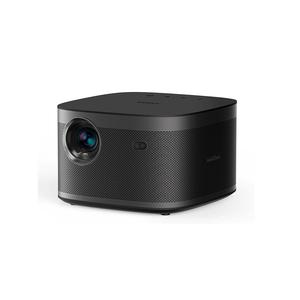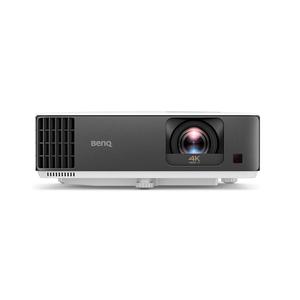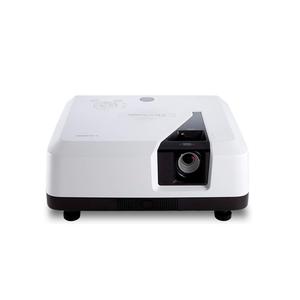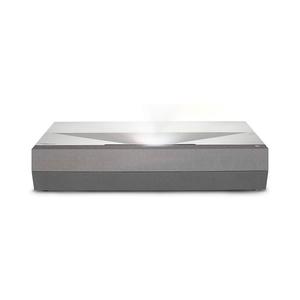What is Color Gamut? Exploring the Palette of Projector Magic
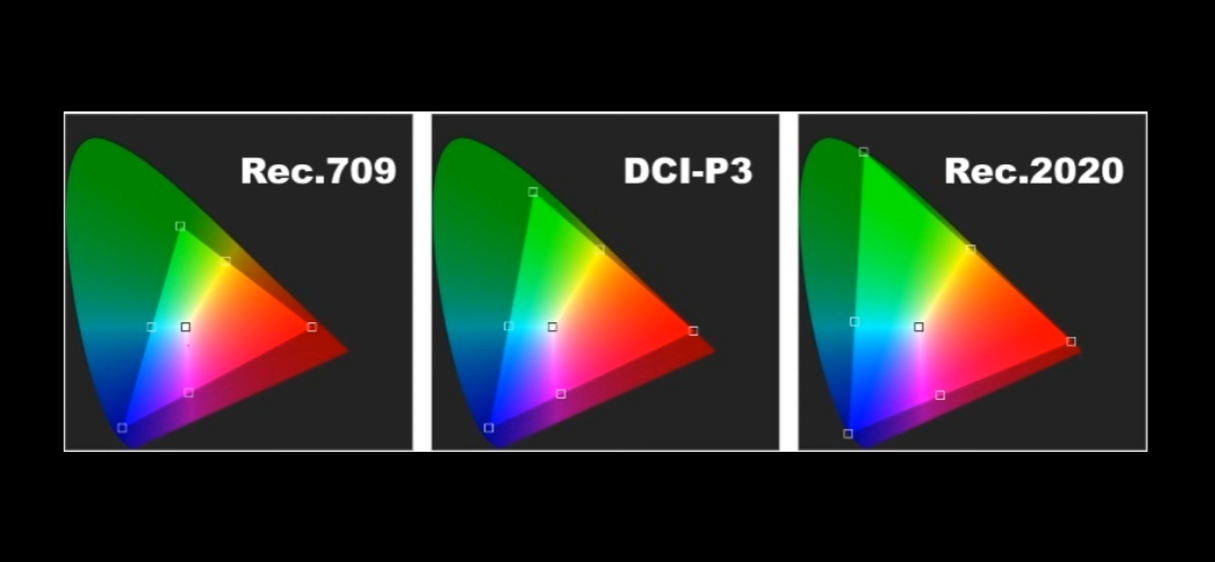
Have you ever been mesmerized by the vibrant, lifelike images projected onto a large screen during a movie or presentation? Behind the scenes, an unsung hero works tirelessly to bring those visuals to life—the projector color gamut. While most of us are familiar with the term "color," the concept of color gamut may be a bit more elusive. In this blog post, we will unravel the mysteries of projector color gamut, exploring its significance, the technology behind it, and how it impacts our viewing experience.
But why is the color gamut of a projector so important? How does it impact our perception of the projected content? Is a wider color gamut always better? Join us on this exploration as we uncover the intricate world of projector color gamut, unraveling its technical aspects, exploring its practical applications, and discovering how it contributes to a more immersive and visually stunning experience. Prepare to be captivated by the magic behind the scenes and gain a deeper appreciation for the role of color gamut in enhancing our visual journeys.
In short: Color gamut determines the range and quality of colors that a device can display, and a wider gamut generally leads to more vibrant and lifelike visual experiences.
- What Exactly is Color Gamut
- Main Color Gamut Standards Comparison Table
- FAQ About Projector Color Gamut
What Exactly is Color Gamut
Color gamut refers to the range of colors that a device, such as a projector or a display, is capable of reproducing. It is often represented in a three-dimensional color space, such as the popular RGB (Red, Green, Blue) color model. Within this color space, the gamut is defined by the boundaries that enclose the spectrum of colors that the device can accurately produce.
To visualize this concept, imagine a spectrum of colors stretching from deep reds to vibrant blues and all the shades in between. The color gamut of a device represents the subset of colors within this spectrum that it can accurately display. A wider color gamut means that the device is capable of reproducing a larger range of colors, including more saturated and intense hues.
Color gamut is often measured and compared using standardized systems such as the CIE 1931 xy chromaticity diagram or the newer CIE 1976 u'v' chromaticity diagram. These diagrams provide a visual representation of the color space and allow for precise measurements and comparisons between different devices.
Just so you know, if you're on the lookout for impressive projector models, here are our top six picks for 2024:
- Excellent 4K image quality
- Stylish and premium design
- Affordable price
- Intelligent screen adaptation technology
- Powerful and high-quality Harman Kardon speakers
- Android TV 10.0 with a rich selection of applications and functions
- Short-throw projection ideal for small spaces
- 4K resolution with low input lag
- Android TV integration
- Compatible with major gaming consoles
- Easy setup with flexible image adjustment features
- 4K UHD resolution with 3,300 lumens
- Long-lasting light source up to 20,000 hours
- HDR compatibility and SuperColor technology
- Flexible connectivity with HDMI, USB, and more
- 3D Blu-ray ready with 360-degree orientation
- Decent 480p image quality with support for HDR10
- Simple and compact design
- Portability and long battery life
- Dolby Digital Plus and Dolby Atmos
- Android 7.1 with sufficient choice of apps and features
- Highly portable with 180-degree rotation
- Auto Leveling, Focus, and Keystone
- Access to a wide range of smart entertainment options
- Dedicated Gaming Hub
- Immersive 360-degree audio with external audio connectivity options
- Ultra-short throw design
- Laser light source for long-lasting and bright performance
- Built-in soundbar with Dolby Digital 2.0
- Smart TV interface with voice control and streaming apps
Main Color Gamut Standards Comparison Table
Here's a comparison table highlighting the main color gamut standards used in the industry:
| Color Gamut Standard | Description | Common Usage |
|---|---|---|
| sRGB | A standard color gamut established by HP and Microsoft in 1996. It covers a wide range of colors that can be displayed on most computer monitors and web browsers. | Mainstream computer displays, web graphics, and general consumer applications. |
| Adobe RGB | A larger color gamut than sRGB, created by Adobe Systems. It encompasses a broader range of colors, especially in the cyan-green region. | Professional photography, graphic design, and printing industries. |
| DCI-P3 | A color gamut standard developed by the Digital Cinema Initiatives (DCI) for digital cinema projection. It offers a wider range of colors than sRGB, including more saturated reds and greens. | Digital cinema projectors, high-end displays, and HDR content. |
| Rec. 709 (ITU-R BT.709) | A color gamut standard defined by the International Telecommunication Union (ITU) for high-definition television (HDTV) broadcasting. It closely aligns with the sRGB gamut. | HDTVs, broadcast content, and video production. |
| Rec. 2020 (ITU-R BT.2020) | A wide color gamut standard designed to support Ultra High Definition (UHD) and High Dynamic Range (HDR) content. It has a significantly larger color space than previous standards. | UHD TVs, HDR content, and advanced digital media applications. |
| Display P3 | Developed by Apple, this color gamut standard is similar to DCI-P3 and offers a wider color space than sRGB. It is used in Apple's products, including iPhones, iPads, and Mac displays. | Apple devices, multimedia content, and applications optimized for Apple's ecosystem. |
Please note that the common usage mentioned in the table is not exhaustive, and these color gamut standards can be used in various other applications and industries as well. The standards mentioned above represent some of the widely recognized and utilized color gamuts in different domains.
FAQ About Projector Color Gamut
What is projector color gamut?
Projector color gamut refers to the range of colors that a projector can reproduce. It determines the depth, vibrancy, and accuracy of the colors displayed on the screen.
Why is projector color gamut important?
The color gamut of a projector directly impacts the visual experience by influencing the richness and realism of the projected images. A wider color gamut allows for more vibrant and lifelike colors, enhancing the overall viewing experience.
How is projector color gamut measured?
Projector color gamut is typically measured using standardized systems such as the CIE 1931 xy or CIE 1976 u'v' chromaticity diagrams. These diagrams provide visual representations of the color space and allow for precise measurements and comparisons.
What are the main factors that influence projector color gamut?
Several factors influence projector color gamut, including the color space used by the projector, the technologies employed to enhance color reproduction (such as wider color filters or laser light sources), and the quality of the optical components used in the projector's system.
Are all projectors' color gamuts the same?
No, projectors can have different color gamuts depending on their design, intended usage, and the technologies incorporated. Higher-end projectors often offer wider color gamuts, while budget or entry-level projectors may have more limited color reproduction capabilities.
Is a wider color gamut always better?
While a wider color gamut can offer more vivid and accurate colors, it is essential to consider the source content as well. If the content is not mastered or encoded to take advantage of the wider color gamut, it may not provide a noticeable improvement. Additionally, in certain cases, a wider color gamut can lead to oversaturation or unrealistic color representation.
Can I adjust the color gamut of a projector?
Most projectors allow you to adjust basic color settings such as brightness, contrast, and saturation. However, the color gamut itself is primarily determined by the projector's design and cannot be easily modified.
How can I choose a projector with a suitable color gamut for my needs?
When selecting a projector, consider the intended usage and the content you plan to display. If you work with professional photography or graphic design, you may require a projector with a wider color gamut such as Adobe RGB. For general use, a projector with a standard color gamut like sRGB or Rec. 709 should suffice.
